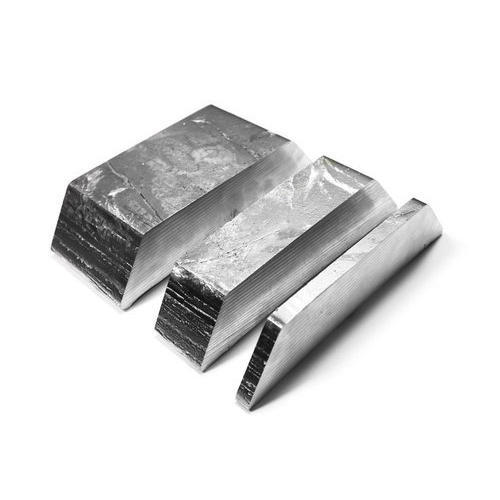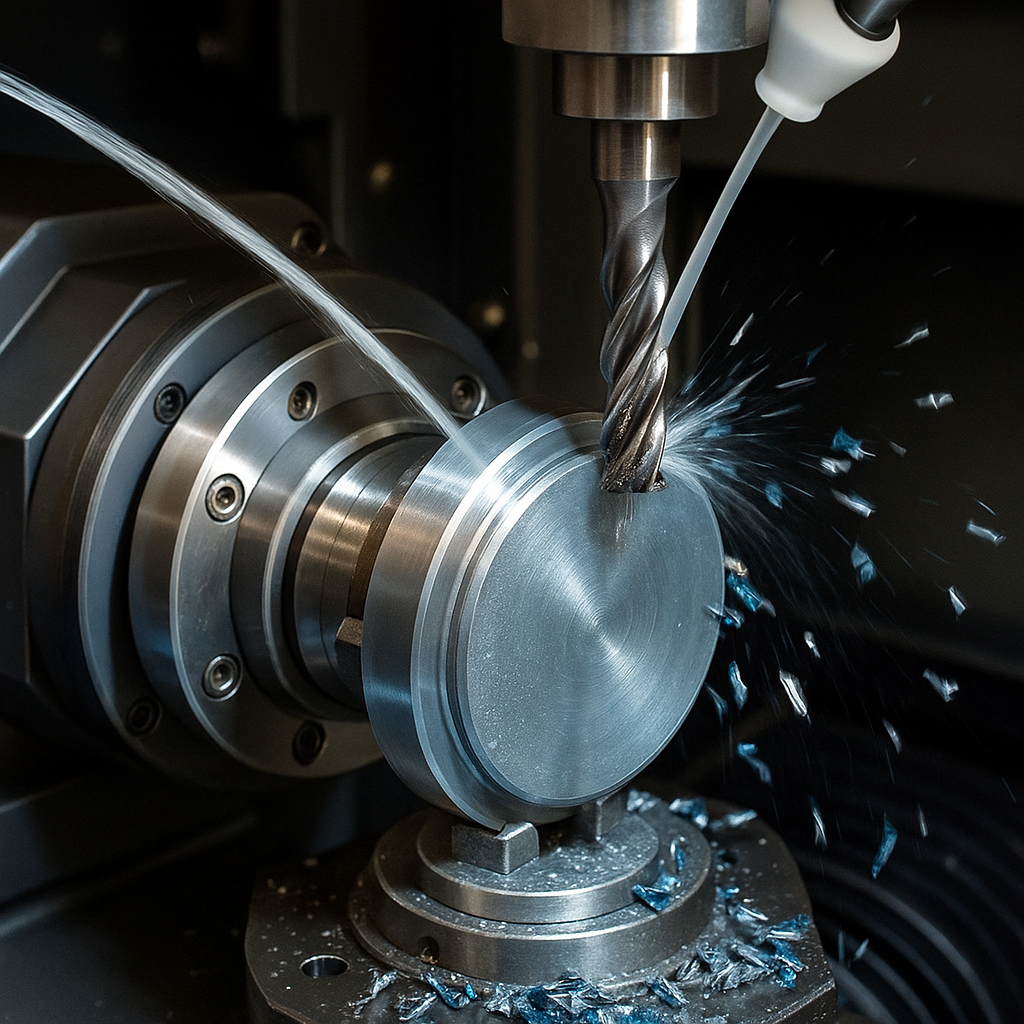Zinc Alloy Machining-Grades, CNC Techniques & Practices
 Jun 09,2025
Jun 09,2025

Zinc machining is crucial for many industries due to its unique properties, making innovation easy. Zinc alloys are considered for many applications due to cost-effectiveness, versatility, and high accuracy. Furthermore, unique features of zinc metal along with the ability to easily combine with other metals make it suitable alloy for precision parts with desired qualities. This article will further highlight the different types of zinc alloys and their suitability for CNC machining.
What Is Zinc Alloy?
Zinc alloy is a combination of zinc with other metals like tin, aluminum, copper or cadmium. These materials have better properties than pure metal like high corrosion resistance, ductility and strength. The common applications of zinc alloy metal are thermal spraying, Die casting, and manufacturing parts for construction, household items and automotive.

Why Zinc Works for Precision Machining?
Zinc is a preferred choice for precision machining because of remarkable machining properties to attain tight tolerance and cost-effectiveness, it has low melting point and high thermal conductivity suitable for machining applications. It also offers stable chip formation which further improves the machining operations with high precision and efficiency.
Brief History of Zinc Alloys
Zinc alloy metal have a history covering millennia. It was first used in ancient times as brass because zinc as a pure metal was recognized later in 1400s. early production and refining of zinc carried out in China and India and then European production starting in the 18th century.
|
Year |
Country |
Description |
|
Ancient times (before-1000BC) |
Palestine |
Zinc ores were used to make brass. |
|
13th century |
India |
Metallic zinc produced first time |
|
1400 |
India |
Zinc recognized as pure, distinct metal |
|
1500 |
China |
Zinc refining for large scale production |
|
1740s |
Europe |
Andreas Marggraf in Germany rediscovered zinc as pure metal |
10 Types of Zinc Alloys for Machining
For machining, zinc alloy metal used are Zamak 2, Zamak 3, Zamak 5, Zamak 7, ZA-8, and many more. Details of the ten most common zinc alloys used for machining are discussed below:
1.Zamak 3
Zamak 3 is a common zinc-based die casting alloy. It has high castability, strength-to-weight ratio, and corrosion resistance. It is known for its die casting and finishing capabilities suitable for a variety of applications.
|
Elements |
Percentage |
|
Zinc |
96% |
|
Aluminum |
3.5-4.3% |
|
Magnesium |
0.02-0.05% |
|
Copper |
0.025% |
Advantages
Zamak 3 offers many advantages. It has:
- High fluidity allows easy die casting
- Good ductility for bending and forming applications
- High dimensional accuracy and stability
- Good level of corrosion resistance
- High cost-effectiveness
Limitations
Zamak 3 has few limitations. It has
- Lower tensile strength than some other alloys
- And it is susceptible to creep
Typical Applications
Zamak 3 used in
- various automotive components, like door handles and trim pieces.
- electronic housings, connectors, and other components.
- hinges, locks, and other hardware items.
- furniture, appliances, and other household products.
- medical devices and instruments.
2.Zamak 5
Zamak 5 is primarily composed of zinc and aluminum with other alloying elements. It is famous for its corrosion resistance, strength and high die-casting properties.
|
Elements |
Percentage |
|
Zinc |
96% |
|
Aluminum |
3.8-4.2% |
|
Magnesium |
0.035-0.06% |
|
Copper |
0.7-1.1% |
|
Iron |
0.020% |
|
Cadmium |
0.002% |
|
Tin |
0.001% |
|
lead |
0.003% |
Advantages
Zamak 5 has many advantages. It has
- High strength and hardness
- Good corrosion resistance
- excellent die-casting properties
- High cost-effectiveness
Limitations
Zamak 5 has a few limitations. It has:
- Lower ductility
- Low thermal strength at high temperatures
- Heavy weight and is not suitable for weight-sensitive applications.
Typical Applications
Zamak 5 has many applications. It is used in
- Automotive components like brackets, gear housings and motor components
- Consumer goods for decorative parts, furniture locks and handles.
- Industrial equipment in machinery and equipment
- Construction hardware
- Sanitary Ffttings
3.Zamak 7
Zamak 7 is known for its good ductility, excellent castability, and relatively high strength. It primarily contains zinc with smaller amounts of aluminum and other elements.
|
Elements |
Percentage |
|
Zinc |
96% |
|
Aluminum |
4% |
|
Magnesium |
Minor amount |
|
Copper |
Minor amount |
Advantages
Zamak 7 has:
- Excellent castability
- High ductility
- Good strength
- Dimensional stability.
- Corrosion resistance
- Low melting point
Limitations
Zamak 7 has some limitations. It is:
- Susceptible to hydrogen embrittlement
- Has lower strength compared to some other alloys
- Not suitable for high-temperature applications
- May require surface treatment
Typical Applications
It is mostly used in:
- Automotive components like engine brackets, steering components
- Electrical and electronic components like housing, connectors, and other parts
- Industrial components like pumps, valves
- Household appliances like handles
- Textile machinery
4.Zamak 2
Zamak 2 is primarily used in die casting. It is known for its high strength, hardness, and creep resistance. It's composed mainly of zinc with copper and other elements
|
Elements |
Percentage |
|
Zinc |
96% |
|
Aluminum |
3.7-4.3% |
|
Magnesium |
0.02-0.06% |
|
Copper |
2.6-3.3% |
|
Iron, lead, cadmium and tin |
Traces |
Advantages
Zamak 2 has:
- high tensile strength and hardness
- excellent creep resistance
- good corrosion resistance
- Easy to cast and machine
- high dimensional accuracy
- Vibration attenuation and damping capacity
Limitations
Zamak 2 has some limitations. It has
- increased brittleness
- high shrinkage
- not ideal for high-stress or high-temperature applications
- higher cost
Typical Applications
Zamak 2 used in
- metal forming dies
- plastic injection tools
- industrial fittings and gears
- automotive components
- home appliances
- consumer goods
5.ZA-8
ZA-8 is a zinc-based alloy with high amounts of aluminum and copper. It is known for its high strength, hardness, and wear resistance compared to conventional zinc alloys.
|
Elements |
Percentage |
|
Zinc |
90% |
|
Aluminum |
8% |
|
Magnesium |
Traces |
|
Copper |
1% |
|
Iron, lead, cadmium and tin |
Traces |
Advantages
ZA-8 has many advantages. It has:
- enhanced mechanical properties
- creep resistance
- high fluidity suitable for die casting
- high plating and surface finishing
- improved corrosion resistance.
- does not spark.
Limitations
ZA-8 has few limitations. It is:
- susceptible to plastic deformation when stressed at high temperatures.
- has dimensional changes after aging
- has brittle nature
Typical Applications
ZA-8 has many applications in:
- decorative products
- bearings where minimally wear inserts and bushings are needed.
- durable components where durability and strength are critical.
- thin-walled parts
- applications with aesthetic surface finishes
(Click on these buttons to show chemical composition)
6.ZA-12
ZA-12 is known for its high strength, hardness and wear resistance. it also has excellent castability and cost-effectiveness.
|
Elements |
Percentage |
|
Zinc |
88% |
|
Aluminum |
11% |
|
Magnesium |
Traces |
|
Copper |
1% |
Advantages
ZA-12 has many advantages. It has:
- high strength and hardness
- excellent wear resistance
- good castability
- dimensional stability
- machinability and platability
Limitations
ZA-12 has limitations of:
- not suitable for high-temperature applications.
- susceptible to hydrogen gas porosity (in some cases)
Typical Applications
ZA-12 used in
- die casting
- permanent mold casting
- gravity casting
- bearing components
- engine components
- building hardware
- business machines
- oil and gasoline valves

7.ZA-27
ZA-27 is known for its high-strength and lightweight capabilities. It is primarily zinc with a high amount of aluminum and copper
|
Elements |
Percentage |
|
Zinc |
70% |
|
Aluminum |
28% |
|
Copper |
2% |
|
Other elements |
traces |
Advantages
ZA-27 has advantages of
- high strength
- lightweight nature
- Good wear resistance
- anti-sparking nature
Limitations
ZA-27 has some limitations of:
- requires cold chamber die casting
- shrinkage issues
- property degradation at higher temperatures
- not suitable for plating
- dimensional instability
Typical Applications
ZA-27 is used in
- bearing applications
- automotive components
- machinery and equipment
- marine structural materials
8.EZAC
Engineered Zinc Alloy Composition is primarily composed of zinc, with aluminum and other elements. It has higher creep resistance and strength than traditional zinc alloys
|
Elements |
Percentage |
|
Zinc |
Balanced |
|
Aluminum |
4-8% |
|
Copper |
3-9% |
|
Other elements |
traces |
Advantages
EZAC has advantages like:
- high creep resistance
- enhanced strength and hardness
- hot chamber processing
- improved fluidity
- good plating and finishing characteristics
Limitations
EZAC has a few limitations like:
- potential brittle behavior
- corrosion sensitivity
- limited high-temperature applications
Typical Applications
EZAC has many applications in fields like
- automotive components
- electrical components
- industrial equipment
- consumer goods
- medical devices
9.ACuZinc
It is primarily composed of zinc, copper, and aluminum, with different percentages of copper and aluminum depending on the applications
|
Elements |
Percentage |
|
Zinc |
Balanced |
|
Aluminum |
3-8% |
|
Copper |
5-10% |
|
Other elements |
traces |
Advantages
ACuZinc has many advantages like:
- enhanced mechanical properties
- high wear resistance
- cost-effectiveness
Limitations
ACuZinc has limitations of:
- tool wear
- Limited working temperature range
Typical Applications
ACuZinc is used in industries like
- automotive
- bearing applications
- electronic/electrical systems
10.Tombak
It is a copper-based alloy with alloying agent zinc and other elements like tin, lead or arsenic.
|
Elements |
Percentage |
|
Zinc |
28% |
|
Copper |
72% |
|
Other elements |
traces |
Advantages
Tombak has advantages like:
- high sheen
- tarnish resistance
- easy to work
- cost-effectiveness
Limitations
Tombak has limitations of:
- lower strength
- reduced machinability
- not ideal for high-strength applications
- not as common as brass
Typical Applications
Tombak is used in decorative items like:
- art casting
- historical artifact
- coin plating
- metal leaf
CNC Processes Optimised for Zinc Parts
Machining processes can be optimized for zinc milling depending on factors like tool selection, cutting parameters, and material properties.
High-Speed Milling Zinc Techniques
Machining Zinc alloys like ZAMAK 3 and ZA-27 are undergone 5-axisCNC milling. This technique used smaller tools and higher speeds to minimize tool wear and maximize productivity. CNC process is optimized for zinc milling by using positive insert geometries, sharp edges, and potentially dry cutting strategies.
Precision Turning for Zinc Threads
This method offers high accuracy and is flexible for creating threads on zinc. It has consistent thread size and location and better surface finish. This process is suitable for medical and aerospace applications, where precision is crucial.
Micro-Drilling & Tapping Zinc
This method creates small holes and threads in zinc materials using specialized tools. These are necessary for intricate designs, miniature components, and for precise fastening applications.
EDM for Intricate Zinc Cavities
EDM is best for creating intricate cavities in zinc. It excels at shaping complex geometries and working with harder materials. The process uses an electrode having a cavity and then immerse the workpiece in a dielectric fluid to apply electrical discharges and erode the material.
Surface Finishing & Protective Coatings
Surface finishing and protective coating create a protective layer to a material's surface which increases its properties and lifespan. This also improves aesthetics, durability, corrosion resistance, and functionality.
Zinc vs. Brass vs. Stainless Steel in CNC Machining
Brass normally shows high machinability compared to stainless steel and zinc machinability because it allows faster cutting speed and less tool wear. Machining zinc alloys are easier than stainless steel.
Machinability in CNC Machining
- Cutting Difficulty
Zinc machinability is easier in cutting than stainless steel and brass. Stainless steel is hard and requires low speed. Brass is ductile and allows easy cutting.
- Cooling Needs
Brass can be machined without coolant. But stainless steel and zinc require coolant to prevent heat build up and tool wear.
- Processing Speed
Brass allows fastest processing speed. Zinc machinability is good and works at moderate speed, and stainless steel has the slowest speed among all.
Material Properties
- Tensile Strength
Zinc alloys have lower tensile strength than stainless steel. brass has good tensile strength while stainless steel has highest tensile strength
- Thermal Conductivity
Stainless steel has lower thermal conductivity. Zinc has moderate conductivity while brass has the highest thermal conductivity among all.
Challenges & Solutions in Zinc Manufacturing Process
Zinc manufacturing processes can be challenging. Few common challenges along with their solution are discussed below:
Gummy Chip Formation Control
Zinc chips can be gummy due to low melting point and ductility. It results in poor surface finish and tool wear. This can be minimized by using optimized cutting parameter, using soft/lubricating coatings and coolant lubrications, and using chip breaker to break gummy and long chips.
Heat Management for Low-Melt Alloys
Zinc has low melting point which leads to overheating, deformation and surface defects during machining. This can be minimized by using high-speed machining, high feed rate, optimized coolant or lubrication and proper selection of tool geometry.
Burr Minimisation & Edge Quality
Burs and poor edges occur in zinc alloys due to their ductility and tendency to deform. This can be minimized by using sharpened tools, low cutting speed, vibration-assisted for zinc CNC-machining and using post-processing methods like deburring.
Tool Coatings & Wear Reduction
Zinc is ductile and can adhere to tool which leads to tool wear. This can be minimized by using specialized cutting tools with coating like TiN, AlTiN, or PVD, using lubricating coatings and using Proper tool geometry and regular tool maintenance.
Design-for-Manufacturability (DFM) Guidelines
DFM guidelines for zinc alloys allow ease of production and assembly and are economical with improved quality:
Set Minimum Wall and Rib Thickness
- Allow sufficient thickness to prevent cracking and to survive high stress during applications.
- Ribs with adequate thickness and spacing allow structural support without introducing weight complexity.
Add Generous Fillet Radii and Draft Angles
- Fillet radii at internal corners prevents stress concentration and improves material flow
- draft angles on vertical surfaces allow ejection from molds or dies.
Plan Thread Inserts and Reinforcement Bosses
- thread inserts must be used strategically for mounting or fastening because direct threading into zinc is prone to weakening.
- Reinforcement bosses allow structural support and help to withstand stress without failure.
Control Tolerance Stack-Up and Fit
- Tight tolerance control allows proper fit and function of parts.
- Design parts with adequate clearance allow easy assembly and prevents binding or jamming.
Conclusion
Zinc machinability is high with rapid zinc CNC-Machining rates, and minimal tool wear. Low melting point of zinc can cause heat build-up but strategies, like flood cooling, can minimize heat buildup and softening. Machining zinc alloys are categorized as ZAMAK and ZA alloys. While ZAMAK alloys are the most common and known for their excellent die castability and strength. ZA alloys have higher amounts of aluminum and show high strength.
If you looking for one-stand zinc machining custom service, come to TUOFA CNC machining! Upload you details, the professional engineering team will reply you at a quick time~
Zinc Alloy Machining FAQs
Which coolant is best for the high-speed milling of ZA alloys?
Emulsifiable cutting oil mixed with water, with 20:1 ratio is recommended in high-speed milling of ZA alloys.
Can zinc replace aluminum in load-bearing parts?
Yes, zinc alloys replace alumni because they have high longevity and durability for automotive parts.
Why does my ZA-27 casting show porosity after machining?
Porosity, or voids in a ZA-27 casting occurs due to solidification shrinkage and trapped gases. Trapped gases like hydrogen or moisture also result in porosity.
 Tel/WeChat:
Tel/WeChat:  Email:
Email: 
 Home
Home
 Things You Need to Know about CNC Kovar Machining
Things You Need to Know about CNC Kovar Machining 







